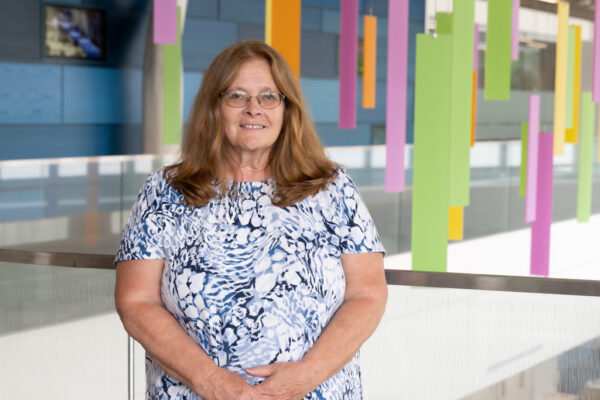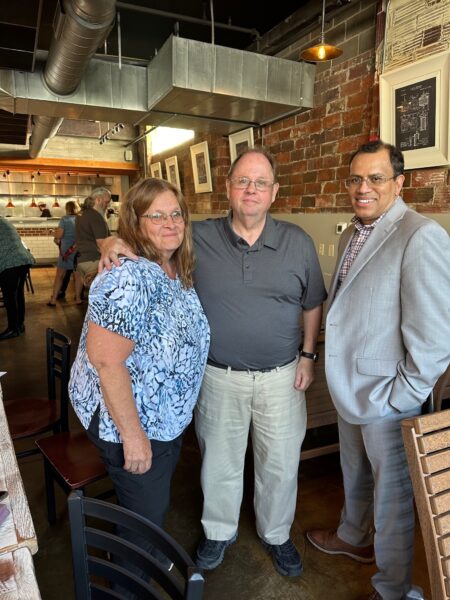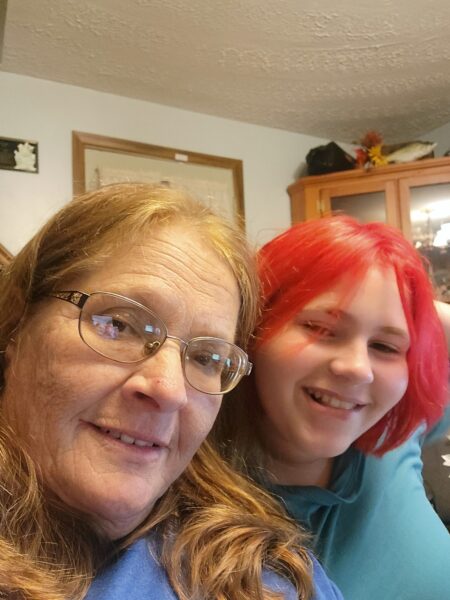
Tina Glass, telecommunications supervisor, retires on June 3 after working at Akron Children’s for 23 years.
People in need have always found support from Tina Glass, telecommunications supervisor at Akron Children’s. As an ambulance medic and member of Akron Children’s critical care transport team, Tina provided emergency medical care and ensured the safe, efficient transfer of critically ill patients. She brought the same type of support to telecommunications where she and her team help set the tone by creating positive patient experiences and interactions with callers.
“As a medic, I found myself creating a bond with the parents riding up front with me, while answering their concerns and trying to comfort them,” Tina said. “As the telecommunications supervisor, it’s a different kind of support. Sometimes, it involves being a sounding board, getting the person the help they need or diffusing a situation.”
After 23 years at Akron Children’s, Tina retires on June 3. Her to-do list is long and includes working on her family’s 154-acre farm and caring for the farm’s horses and cows. In her free time, she plans to spend time with family and friends and continue volunteering as vice president of Solar Free Stark, a group of Paris, Ohio residents who are working to stop a large-scale solar farm from being built.
What brought you to Children’s?
I was a transport medic for an ambulance company. Akron Children’s used to contact us when they needed neonatal and pediatric critical care transport for patients. I was one of the medics who picked up the Children’s transport team when they were dispatched to a facility. Over the years, I got to know Children’s transport nurses and doctors in the Neonatal Intensive Care (NICU) and Pediatric Critical Care Medicine (PICU). When Children’s decided to bring its critical care transport services in-house, they offered me a position as a medic team leader. I was also offered a position in the newly established communication center that took the calls for the transport team. I split my hours between both positions.

At a recent retirement celebration, Tina Glass and Russ Johnson (center), retired network manager, are congratulated by Harun Rashid, Akron Children’s vice president, Information Services and Chief Information Officer.
Have you always worked in the same department and role?
Initially, I was part of Children’s transport services, but when the job for communications center supervisor opened, I applied and was hired for that role. Seven years ago, when the telecommunications supervisor became available, I was hired and moved into Children’s Information Services. A lot of this role is administrative, such as reviewing invoices for Children’s hundreds of regular and cell phones and other devices. Additionally, I work with the operators and help or troubleshoot as needed.
What have your biggest contributions been while here?
Akron Children’s Kay Jewelers Pavilion construction project occurred while I was part of the communications center. It included moving the communications center so that we were in closer proximity to the emergency room and upgraded the way we worked with EMS squads.
I was part of Information Services when COVID-19 happened. The operators didn’t have the option to work from home. We’re now developing different disaster recovery plans as a result of the global pandemic, which have included up-to-date consoles that will allow Children’s operators to work remotely if the need arises.
How has Akron Children’s changed since you started here?
Two decades ago, there used to be a “bat phone” – a big phone with a red light – standing on a desk in PICU to alert the team about a critically ill patient. We called that phone, a nurse answered and took the information. The nurse then did a “9-1-4” page to conference in the transport team’s doctors and nurses. The process is much speedier now!

Tina Glass and her granddaughter enjoy taking a selfie together.
What gave you the most satisfaction at work?
In telecommunications, it’s when people call and tell us how appreciative they are of Akron Children’s. It’s a nice feeling to be able to know we’re helping patients and their families.
For me personally, it’s all the friends I’ve made at work who I laugh with and understand how important our work is. I’m looking forward to saying goodbye to work friends who stop by the operators’ office on my last day on June 3rd.
What’s your most memorable and/or happiest moment at Akron Children’s?
When I was in transport, patients I saw were critically ill. I often checked on them. It was always a blessing when I heard about patients who made progress.
What’s your idea of a perfect day?
I live on a farm with my father, husband and granddaughter. There’s always a lot of work. But when I finish all my projects and get to enjoy the day, it feels good.

There are always a lot of projects on the 154-acre farm where Tina Glass lives, including caring for the horses and cows.
Do you have any advice for people just starting at Children’s?
Children’s is a great place to work. Make friends with your co-workers along the way.
What couldn’t you live without?
My family, grandchildren and friends.










